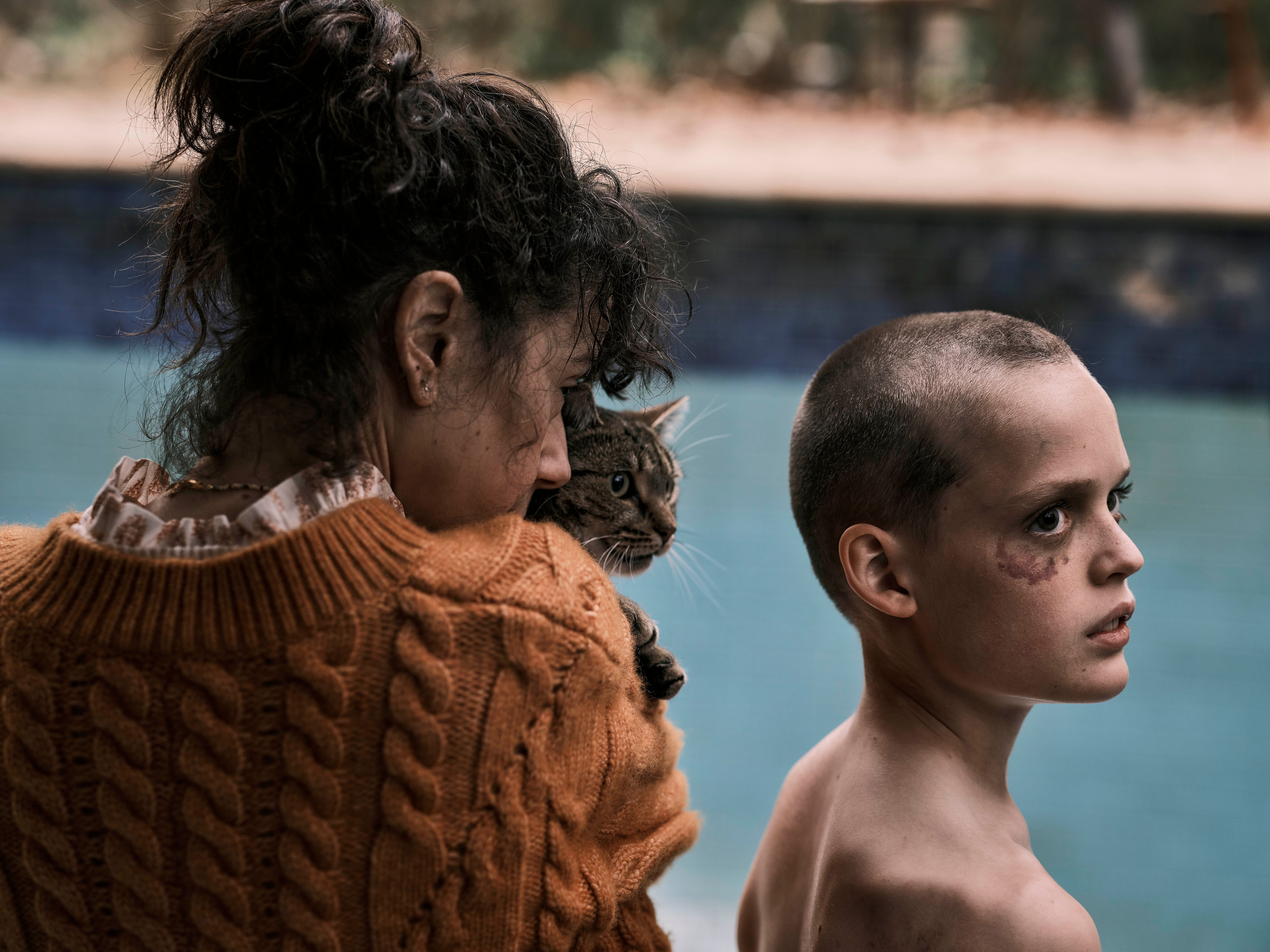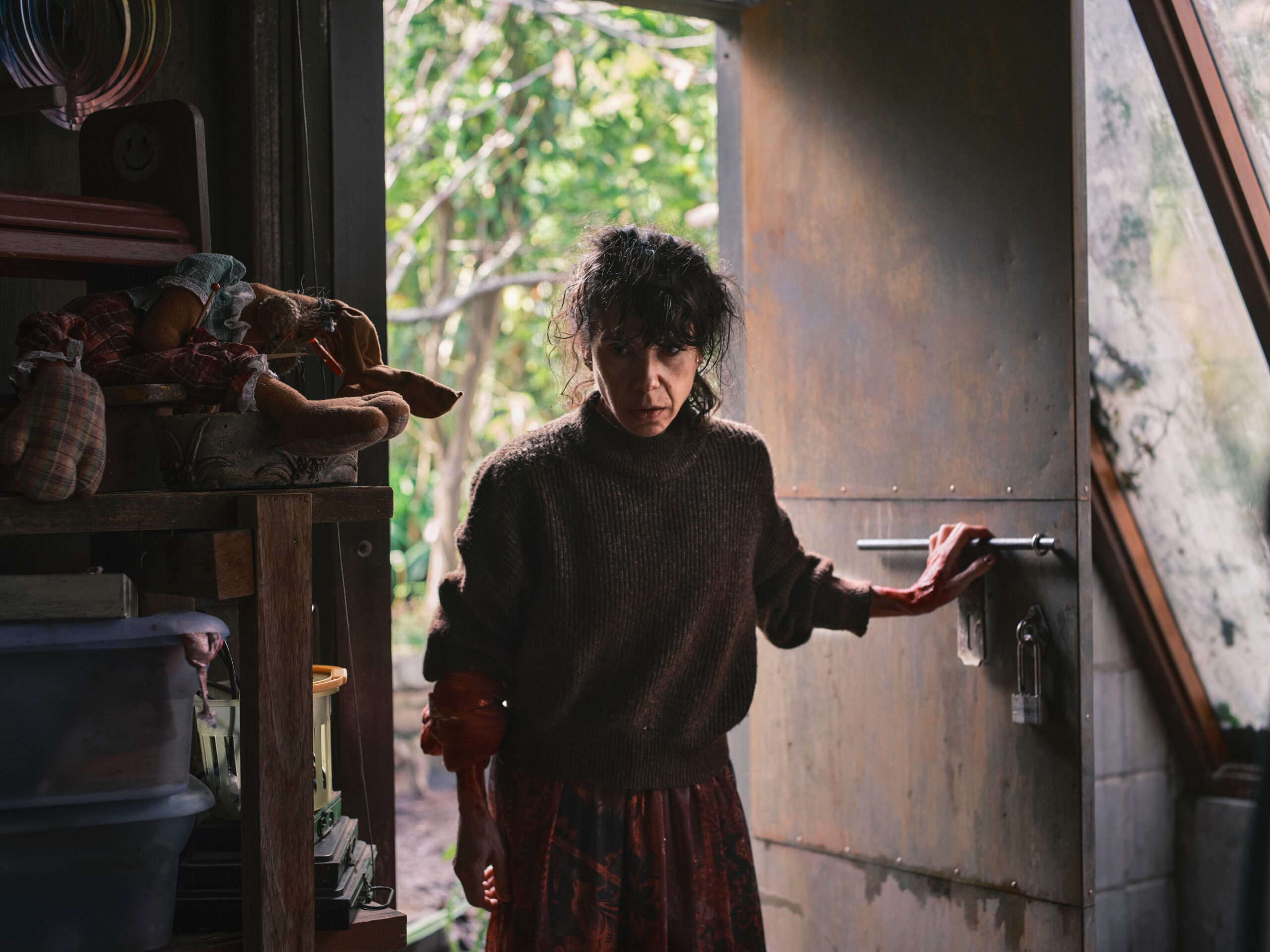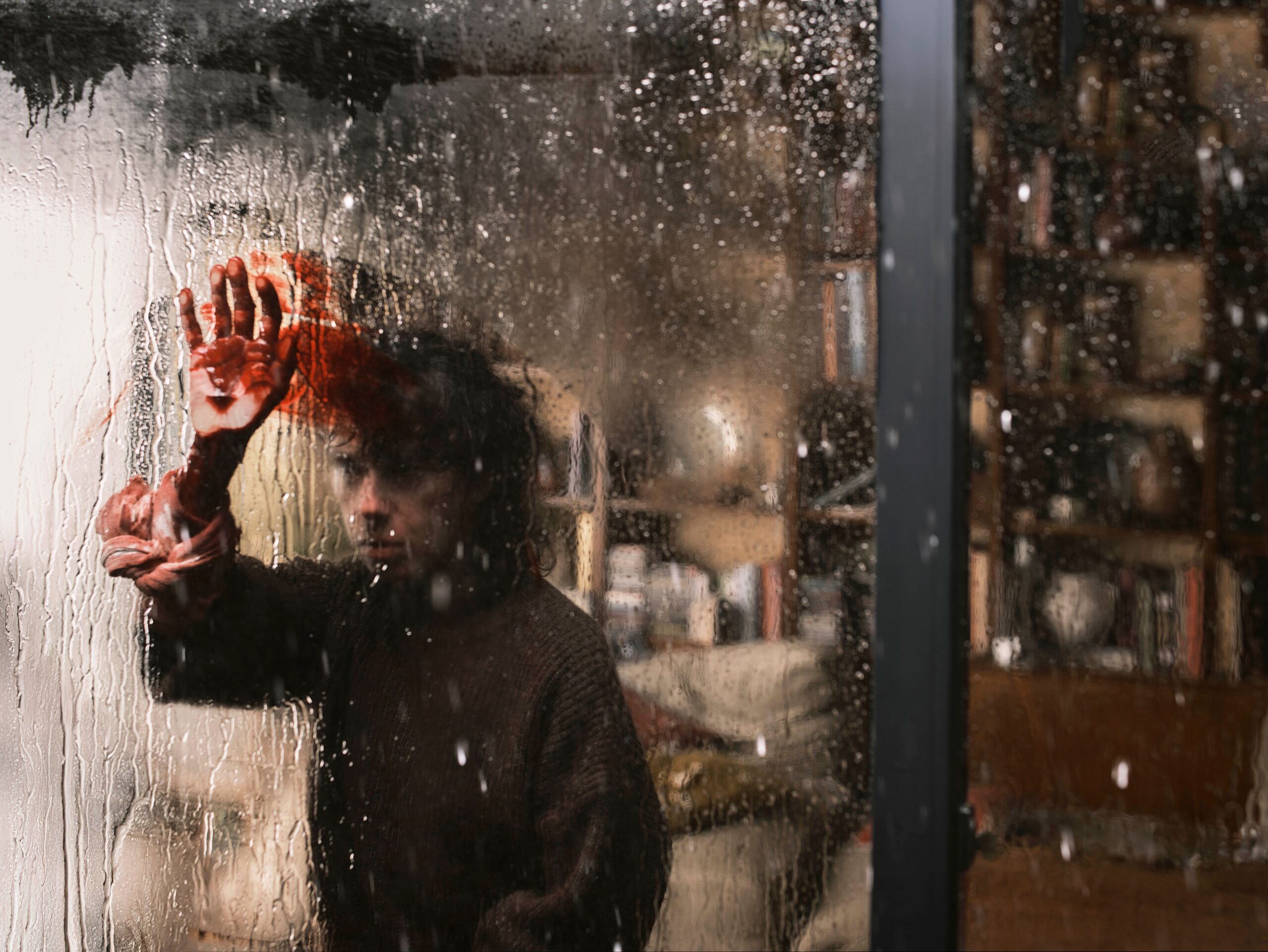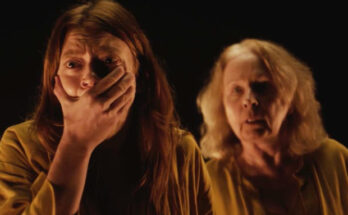Want to hear more from the actors and creators of your favorite shows and films? Subscribe to The Cinema Spot on YouTube for all of our upcoming interviews!
Managing editor & film and television critic with a Bachelor's of Arts in English Literature with a Writing Minor from the University of Guam. Currently in graduate school completing a Master's in English Literature.
As a follow-up to their feature co-filmmaking debut, Talk to Me, Australian twin brothers Danny and Michael Philippou return with a new supernatural horror film distributed by A24 and produced by Causeway Films. Titled Bring Her Back, the story carries over Talk to Me‘s themes of communication, grief, and mourning. It conveys them in a narrative that is equally as cruel and gruesome threefold. As the plot progresses and unravels, it seems increasingly challenging for me not to compare this film to M. Night Shyamalan’s works, such as The Visit and Split, as well as Jordan Peele’s Get Out. Suffice it to say, as revolting as it appears, Bring Her Back continues the filmmakers’ experiment with heavy albeit recognizable morals.
Bring Her Back is co-written by Bill Hinzman (Talk to Me) and executive producer Danny Philippou. The film is co-directed by Danny and executive producer Michael Philippou, both of whom are also known as RackaRacka.
In this review, I will discuss Danny and Michael Philippou and Bill Hinzman’s Bring Her Back. As this article’s title suggests, no spoilers will be present.
Trigger Warning: This film contains references to cannibalism, domestic violence, grief, emotional and psychological manipulation, and more.
A24’s Bring Her Back Premise
According to A24 Press, here is the official logline/ synopsis for Danny and Michael Philippou’s supernatural horror mystery film, Bring Her Back.
A brother and sister uncover a terrifying ritual at the secluded home of their new foster mother.
A24 Press
Discussion
It’s tough to maintain momentum after the viral hit that was Talk to Me. The Philippous and Hinzman have proven themselves to be hard-hitting storytellers, and Bring Her Back continues to showcase that. Its title alone is a tough feat in creativity, teasing what lies ahead down the rabbit hole. The A24/ Causeway film winds up with scarce flaws; therefore, I believe it’s held up brilliantly by many components. The script sheds light on numerous aspects, namely the music, the location setting, the figurative devices, the characterizations, and the overall appeal.
For one thing, the special makeup effects from both Make-Up Effects Group and Scarecrew Studios are Hellishly life-like. While early reactions view the film as repugnant, adding onto Talk to Me‘s visually upsetting moments featuring Joe Bird’s Riley, horror fans might benefit from a walk in the park compared to the likes of Pascal Laugier’s Martyrs as well as Damien Leone’s Terrifier movies. Sure, the imagery is horrifying, but the genre has seen worse days. Major questions that should be asked here are: Is the film difficult to look at? How bleak of a narrative are we looking at here?
On a scale from Teletubbies to James Watkins’s Eden Lake, Bring Her Back at least provides something to come back from, whether it’s someone to care for protagonist Piper (Sora Wong) or a resolution to the mystery surrounding Oliver (Jonah Wren Phillips). Looking at how it all ends, I cannot guarantee, “It gets better.” However, with this film fitting into a similar category as Denis Villeneuve’s Prisoners, audiences may find that glimmer of hope. It makes sense, then, to feature characters like Piper, who is partially sighted, and Oliver, who is somehow mute.
Terrific, Terrifying Technicalities
Music composer Cornel Wilczek’s soundtrack and music supervisor Andrew Koťátko’s song selections are mostly great work. The comforting, slow music as Andy (Billy Barratt) and Piper drive to Laura’s (Sally Hawkins) home is a good score. As the story progresses, Wilczek’s score turns haunting and tragic. I mean that with the best of compliments since the music almost immerses me into the narration. That can be quite a tear-jerker to some viewers. Sound designer Emma Bortignon’s work helps enhance the sense of hearing, such as windshield wipers sweeping rain away from characters.
“Alive” by Aussie electropop duo Empire of the Sun speaks of the vitality despite the lack of vision. “Violence” by the alternative rock band The Riot feels like a young people’s anthem of a movement through a self-destructive, transformative nature, and it sounds great, too. The back-to-back playing of “Freaks” by Timmy Trumpet and “What About Me” by Shannon Noll is fantastic for the siblings’ coping with loss. “Untouched” by Aussie electropop duo The Veronicas points to Laura’s incessant wants, as opposed to her needs and desires. Lastly, the inclusion of music by Yoko Ono is awkward, but to each their own.
Visual Violence
With help from production designer Vanessa Cerne, director of photography Aaron McLisky’s shots in and around Laura’s home constantly alter viewers’ perception. The overhead shots of Laura’s home magnify the scope of what is at stake for the characters and how far they can travel to escape from it. I love the juxtaposition in bird’s eye views of the house bathed in darkness and the truth that comes to light during the daytime. The camera’s close-up of a bloodied knife lingers not just with the characters but with the audience for shock value’s sake. The foster home set piece is like a troubled family member, providing shelter but is often troublesome for allowing misfortune to unfold throughout the siblings’ time there.
Editor Geoff Lamb’s almost smooth transition from an overhead shot of the house to a shower head highlights a disparity juxtaposing circular imagery symbolizing exploitation and protection with trauma and trepidation. (Although, more on circles later.) Additionally, I love the sequence between Laura and Oliver at the beginning of the final act. It’s dark, enticing, and a scene assembled perfectly on everyone’s part. Next to that is the film’s final shocking kills—flat-out done well and dramatically.

Bring Her Back‘s Themes
On that note of perception, the A24/ Causeway film often focuses on the human senses. What Piper lacks in partial sight, which is limited to shapes and light, heightens her senses of smell and touch. She can detect when her brother might be nearby and is adept at goalball, a sport I just learned exists. In juxtaposition, Oliver has a sharp tendency to succumb to his sense of taste. This allows him to hyper-absorb whatever he can bite into. Frankly, this could be interpreted as his desire to empathize with others in ways that he cannot express himself. Oliver’s ravenous appetite is the source of a majority of Bring Her Back‘s horrific scenes. He is vital to the narrative in this regard. Apart from that, the film would merely be a standard psychological thriller.
As a result of the screenwriting, sight becomes a strength for Andy and Laura. Both characters unlock the truth based on what can be seen and experienced through the other senses, such as the smell of urine and the opening of a cell phone. On the one hand, Laura is a secondhand witness to the truth surrounding Oliver and his connection to occult rites. She uses this connection to her advantage, a personal aim that is family-related. This mirrors Andy’s perception of the truth, which also drives him towards a family-related goal. Laura and Andy’s personal differences clash, profoundly affecting Piper’s well-being in the process. This culminates in a riveting climax, causing a rift in the “family” dynamic. Furthermore, that very rift guides Andy in the right direction, albeit a suspenseful one.
The Circle(s) of Life
Bring Her Back constantly features circular imagery and symbolism. They never hold one meaning and can be interpreted differently depending on what is shown in a frame, moment, or scene. For example, Laura’s triangular backyard swimming pool reveals a circular formation in the flooring. This could suggest the de-triangulation of the family dynamic, traditionally consisting of two parents and a child. In the case of the co-writers and co-directors, no true corners or connections are established. Instead, the parent (Laura), the prospective guardian (Andy), and the child (Piper) comprise this reputed dynamic.
The circular imagery of Andy watching his clothes swish around in the foster home’s washing machine combines well with the incorporation of water. The flowing path for his side of the story expands an understanding of how he learns to move beyond Laura’s control as a parental figure. This pays off towards the end, where he strives to overcome his predicaments and forcefully unlocks the truth for those who deserve to know it. Likewise, the repetition of the siblings’ use of the word, “grapefruit”, is intended as a bittersweet means to connect each other by the truth.
Ultimately, circles often indicate the movement of spirals—a recurring element in many noteworthy films and television programs that I watch. The fates of Laura’s daughter, Cathy (Mischa Heywood), and the siblings’ father, Phil (Stephen Phillips), are the starting points for everyone to redefine moments of pain and death by the end of the film. Bring Her Back‘s otherwise linear narrative is superimposed by Laura’s playing of video home system (VHS) tapes, which add a layer of in media res narration. The white circles sprinkled around the occult’s victims seemingly signal a certain disparity between the living and the dispossessed.
Feasting One’s Eyes (and Mouth)
Out of the three major themes played throughout the film, the concept of consumption is most intriguing. On the surface, the narrative is essentially centered on characters consumed by guilt and grief. Laura and Andy are filled to the brim with lies they tell others and themselves. Whereas Laura is constantly deluded by possibilities beyond her control, Andy has trouble masking his anxieties. The latter develops better when deciding that being eaten away is not beneficial for him and his sister.
However, deeper into the rabbit hole, there are subtle ideas integrated into the story. The first sign—or really, a red flag—that things will go wrong for the siblings is the introduction of Laura’s taxidermied dog, Pechay. A stuffed pet is symbolic of Laura’s prior yet off-screen attempts to engage with macabre forces. This insinuates that the current events of the film are not her first rodeo. It could be that she had gone from experimenting with animalistic lifeforms to tampering with something more human.

The Crew Behind Bring Her Back
Aaron McLisky (Mr. Inbetween, Talk to Me) serves as the director of photography.
Geoff Lamb (H2O: Just Add Water, Talk to Me) is the editor.
Cornel Wilczek (Talk to Me) scores the original music of the film. Andrew Koťátko (The Babadook, Cargo, The Power of the Dog, Talk to Me, Late Night with the Devil, Dangerous Animals) serves as the music supervisor.
Emma Bortignon (Upgrade, Talk to Me) serves as the sound designer.
Nikki Barrett (The Ruins, Triangle, The Babadook, Mad Max: Fury Road, Cargo, The Leftovers, Upgrade, Aquaman, The Invisible Man, The Power of the Dog, Carmen, Talk to Me, Anyone But You, Furiosa: A Mad Max Saga, Eden, Dangerous Animals) serves as the casting director.
Miranda Harcourt serves as Billy Barratt and Sora Wong’s acting coach.
Jack Troisi, Francesco Cadoni, Jonathan Hairman, and Marty Pepper (The Babadook, Talk to Me) serve as the visual effects supervisors.
Vanessa Cerne serves as the production designer.
Anna Cahill (Talk to Me) serves as the costume designer.
Rebecca Buratto (Mortal Kombat, Talk to Me, Late Night with the Devil) serves as the makeup and hair designer.
Nick Nicolaou (Mighty Morphin Power Rangers: The Movie, The Matrix franchise, The Wolverine, Scare Package II: Rad Chad’s Revenge, Talk to Me) and Paul Katte (Mighty Morphin Power Rangers: The Movie, The Matrix franchise, Scare Package II: Rad Chad’s Revenge, Talk to Me) are the special makeup effects team on behalf of Make-Up Effects Group (M.E.G.).
Larry Van Duynhoven (The Loved Ones, Cargo, Upgrade, The Invisible Man, Mortal Kombat, Together) serves as the special makeup effects artist and prosthetic effects designer on behalf of Scarecrew Studios.

The Cast of Bring Her Back
Sora Wong plays Piper, a blind teenage girl. Billy Barratt plays Andy, her older step-brother.
Jonah Wren Phillips plays Oliver, an orphaned and “increasingly troubled” child.
Sally Hawkins (Godzilla, Paddington, The Shape of Water, Paddington 2, Godzilla: King of the Monsters, Spencer) portrays Laura, a childcare worker and former Department for Child Protection (DCP) counselor.
Sally-Anne Upton plays Wendy, Piper and Andy’s DCP child-care worker.
Stephen Phillips plays Phil, Piper’s stepfather and Andy’s biological father.
Mischa Heywood plays Cathy, Laura’s late daughter.
Ryan Linton Brown plays a “Tari demon”.
Nathan O’Keefe and Nikou Javadi appear as a doctor and a nurse, respectively.
Sophie Wilde (Talk to Me, Babygirl) cameos as “middle-aged mum #4”.
Kira Wong appears as a young Piper.
Luana Pohe appears as a DCP receptionist.
Jesse Prifti and Alexander Prifti play a DCP single mum and a DCP waiting kid, respectively.
Scott Mills and Kahran Mckenzie play DCP security guards.
Bree Peters plays Piper’s goalball coach.
Stunt performer/ intimacy coordinator Ruth Natalie Fallon (Talk to Me) and Helene Philippou, play young women #1 and 2, respectively. Elana Lipapis plays “girl from car who doesn’t get seen”.
Calum Scrivens plays Sargeant Jai Lauder. Alina Bellchambers plays Constable Kira Gray.

Character Developments and Performances
Another important aspect of the Philippous and Hinzman’s Bring Her Back is their characters and their individual appeal. As the adult of the household, Laura does the most that she can to prove she can be a mother figure. I am rather enthralled by The Shape of Water performer’s ability to become an antagonist. The character’s circumstances are rhetorically sound, with the actions and consequences of others falling right into her lap. The timing is good and the mood is set right, thus facilitating Laura’s manipulation of young people. While Andy puts up his walls, Laura possesses no boundaries. This yields a wider variety of options at her disposal. At the end of it all, Laura is a human character with inhumane choices, believing she can save her beloved.
Alongside Hawkins is Jonah Wren Phillips, who performs to the best of his ability with the fewest lines of dialogue. Relegating this specific role to the actor—whereas giving Wong a silent role would render Piper the silent Asian archetype—is a neat accomplishment. Not much is revealed about Oliver’s origins as an orphan except for the little VHS footage that features him. His on-screen metamorphosis is excellent, thanks to the special makeup effects department. With veins temporarily tattooed onto the actor’s skin and his body changing the more he eats, the team did wonderfully.
The Siblings
Seventeen-year-old Andy is a strong character, but his greatest weakness is his youth. He is not too obedient to instructions and might not be the wisest person in survival scenarios. Because of his role as an older sibling, he is reticent about his feelings towards the world and those around him. His unwillingness to communicate establishes a barrier with others. This is especially the case with Laura and Piper, who are each affected by the truth in different ways. Taking on the role of guardian, Andy is protective of the harsh reality that Piper cannot see, figuratively and physically. Moreover, he is foiled perfectly by Oliver, who is mute for different reasons. When Andy does communicate his emotions and experiences, Barratt delivers his lines to satisfaction, tapping into a well of ethos and pathos.
In her first-ever acting role, Wong’s portrayal of Piper is incredible. The character represents the loneliness of existing within a small support system and the ability to still persevere towards a more optimistic end. For instance, during her first morning at Laura’s home, Piper clings to a pillow in bed. This helps her find comfort within reach—a psychoanalysis of the individual in bedspace on its own. Deep down, Piper desires familial companionship. With her stepfather out of the picture, she must rely on Andy to guide her through life’s hardships. Wong’s representation as a visually impaired young person from this region of the world continues the twins’ work with underseen individuals, as they did in Talk to Me.
Final Thoughts on Bring Her Back
Stay safe, stay reliable, yeah?
Laura (Sally Hawkins)
Like their feature filmmaking debut, Talk to Me, the Philippous’ sophomore feature horror film, Bring Her Back, also serves as a dark comedy with a messed-up sense of humor. A24’s production notes of the twins’ two films cite Bong Joon-ho’s Memories of Murder as inspiration, and that is evident in both features. The display of Laura and Andy at Phil’s funeral and Piper’s willingness to kick Andy in the testicles feel like juvenile means of keeping levity within the film’s severe atmosphere.
Conversely, the film is about reflection and rumination on how past and present actions may define who we are to become. As the production notes cite Robert Aldrich and Lukas Heller’s 1962 psychological horror thriller film adaptation, What Ever Happened to Baby Jane?, “[T]here are few things more powerful than a comforting delusion”. Overall, Bring Her Back is undoubtedly a must-see title for lovers of the horror genre.
4.5/5 stars
Danny and Michael Philippou and Bill Hinzman’s Bring Her Back is now playing in theaters!
For more horror and mystery-related news and reviews, follow The Cinema Spot on Facebook, Twitter, Instagram, and Bluesky! Also, follow us on Letterboxd for further feature film, short film, and limited series reviews!
Managing editor & film and television critic with a Bachelor's of Arts in English Literature with a Writing Minor from the University of Guam. Currently in graduate school completing a Master's in English Literature.




